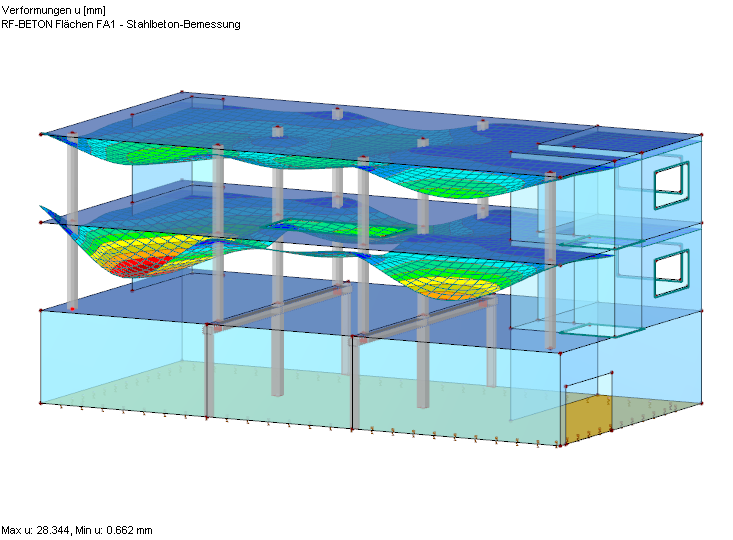Differences resulting from the determination of the deformation in the cracked state can have various causes. In case of deviations, you should check the following points:
Is the same calculation method applied?
RF‑CONCRETE Deflect uses the analytical analysis approach according to EN 1992‑1‑1, 7.4.3.
RF‑CONCRETE NL uses the physically nonlinear analysis approach.
You can find more information about the calculation methods in Chapter 2.7 and Chapter 2.8 of the RF‑CONCRETE Surfaces manual.
- Online Manual | RF-CONCRETE Surfaces | 2 Theoretical Background | 2.7 Verformungsberechnung mit RF-BETON Deflect
- Online Manual RF-CONCRETE Surfaces | 2.8 Nonlinear Design Method
Is the same initial structure available?
Whether the underlying structural system is to be considered equivalent, is best viewed from the results of the linear calculation. The linearly determined deformation of the underlying combination should be approximately equal. Possible differences in the linear deformation may be increased in the cracked state in connection with the deformation analysis.
Are the same effects taken into account?
When comparing, make sure that the same effects, such as creeping and shrinkage, are taken into account (Image 02).
Are the same initial values available?
In connection with the deformation analysis, you should further check if the same initial values are available. In this case, special attention has to be paid to the fact whether the applied reinforcement (Image 03) and the lever arm or the concrete cover are the same.
If you cannot find the cause after a basic examination, please contact our hotline.



























































